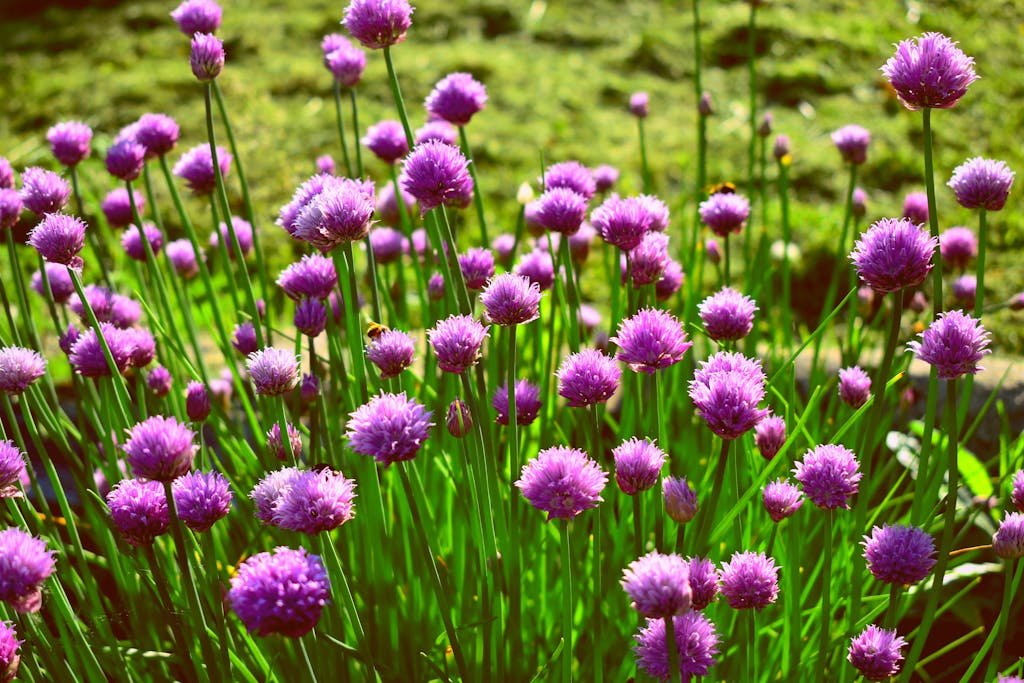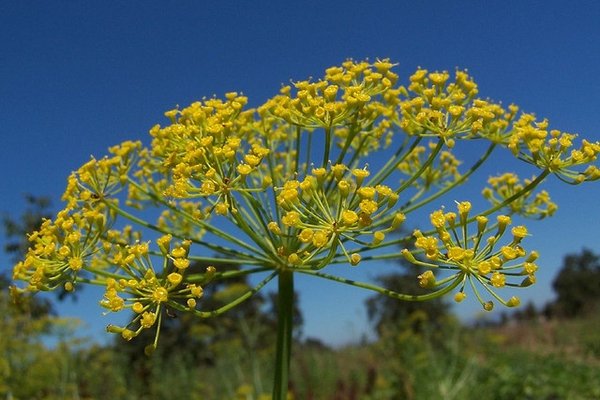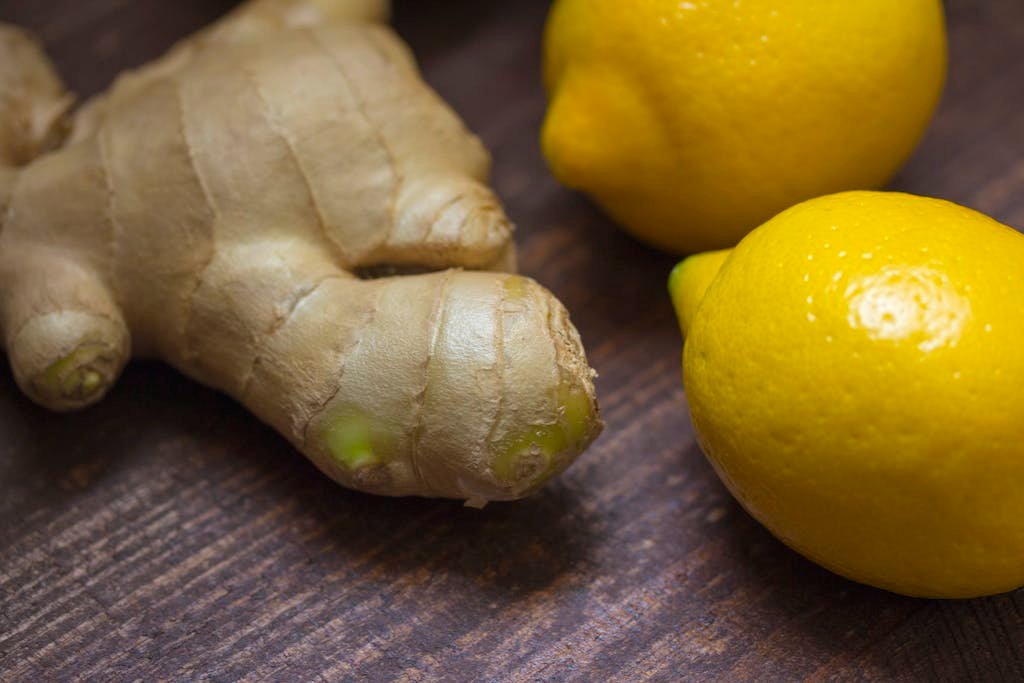Chives – (Allium Schoenoprasum)
Chives, scientifically known as Allium schoenoprasum, are a delightful and versatile herb that’s found its way into kitchens and gardens worldwide. With their delicate onion flavor and vibrant green color, they’re not just a garnish but a culinary staple that enhances a myriad of dishes.
Originating from Europe, Asia, and North America, chives have been cultivated for their taste and medicinal properties for centuries. They’re incredibly easy to grow, making them a favorite among both novice and experienced gardeners. Whether sprinkled over a baked potato, infused into butter, or tossed in a fresh salad, chives elevate the flavor profile of any dish they touch.
Key Takeaways
- Chives, or Allium schoenoprasum, have a rich history dating back thousands of years in Europe, Asia, and North America, valued for both their culinary and medicinal properties.
- Nutritionally, chives are a source of antioxidants, Vitamin K, and Allicin, contributing to reduced chronic disease risk, bone health, and improved cardiovascular health.
- Culinary uses of chives are vast, serving as a flavorful garnish in dishes like soups and salads, and as a key ingredient in dips, dressings, and traditional cuisines worldwide.
- The medicinal benefits of chives include supporting bone health, enhancing the immune system and skin health, and offering antibacterial and antiviral effects due to their rich composition of vitamins, minerals, and sulfur compounds.
- Chives are easy to grow in a garden, thriving in full sunlight and well-drained soil, and can be harvested multiple times per season for culinary use.
- Creative culinary applications of chives extend beyond garnishing, including making chive oil, baking with chives for a savory twist, and incorporating them into fresh salads and egg dishes.
The History of Chives
Chives, scientifically known as Allium schoenoprasum, boast a rich history that traces back thousands of years. Originally found in Europe, Asia, and North America, this herb has not only been a culinary staple but also a symbol of cultural significance among various civilizations.
Ancient Uses and Symbolism
Historical records indicate that chives have been utilized by humans for over 5,000 years. The ancient Romans were known to use chives to relieve sore throats and sunburn, showcasing their early recognition of the herb’s medicinal properties. They valued chives for their flavor enhancement abilities and incorporated them into their diets for both their health benefits and taste. Interestingly, chives were also believed to have magical properties, with some cultures using them to ward off evil spirits or bad luck.
Spread Across Cultures
As civilizations evolved and intermingled, the popularity of chives spread further across continents. It’s documented that Marco Polo, during his explorations, encountered chives and introduced them to parts of Europe. Their ease of cultivation and ability to thrive in various climates contributed to their widespread acceptance and integration into different cuisines.
Modern Culinary and Medicinal Uses
Today, chives are celebrated globally for their culinary versatility and health benefits. The delicate onion-like flavor of chives makes them a favorite among chefs and home cooks alike. In addition to their use in cooking, ongoing research continues to explore the potential health benefits of chives, including their antioxidant properties and role in cardiovascular health.
| Nutrition Aspect | Benefit |
|---|---|
| Antioxidants | May help reduce the risk of chronic diseases |
| Vitamin K | Supports bone health |
| Allicin | May improve cardiovascular health |
Chives’ journey from ancient times to modern kitchens underscores their enduring appeal. They have transcended their origins to become a cherished ingredient in dishes around the world, reflecting their adaptability and enduring popularity.
Culinary Uses of Chives
Chives, with their delicate onion-like flavor, have found their way into a plethora of dishes worldwide. Chefs and home cooks alike cherish them for their versatility and the subtle elegance they bring to meals. From soups and salads to more complex concoctions, the culinary uses of chives are vast and varied.
One of the most common applications is using chives as a garnish. Their bright green color and fresh taste make them an excellent finishing touch for dishes such as baked potatoes, scrambled eggs, and various soups. Moreover, chives are not just about aesthetics; they add a layer of flavor that complements the primary ingredients without overwhelming them.
In addition to garnishing, chives are frequently incorporated into dips, dressings, and sauces. A classic example is the inclusion of chives in cream cheese, providing a burst of flavor that elevates the simplest of spreads. Similarly, chives play a pivotal role in the composition of herb-based sauces and dressings, offering a mild yet distinct onion flavor that enhances the overall taste profile.
Chives are also celebrated in various cultural cuisines for their role in traditional dishes. In French cuisine, for instance, chives are an essential component of the fines herbes mixture, used to season omelets and cheese dishes. Asian cuisine employs chives in dumplings and pancakes, showcasing their ability to merge seamlessly with diverse flavors and ingredients.
Beyond their fresh form, chives can be frozen or dried, although this practice tends to diminish their flavor. For this reason, culinary experts recommend using chives fresh whenever possible to capture their fullest taste and nutritional benefits. Noteworthy research published in Food Chemistry highlights the antioxidant properties of chives, underscoring the added health benefits that come with their culinary use.
As research continues to unveil the health impacts of various herbs, the culinary appreciation for chives only grows. Their simple inclusion in dishes not only enhances flavor but also contributes to a more nutritious meal, showcasing the powerful role herbs can play in our diets.
Medicinal Properties of Chives
Beyond their culinary versatility, chives possess a range of medicinal properties that have been recognized for centuries. These benefits stem from their rich composition of vitamins, minerals, and antioxidants, making them more than just a flavorful addition to dishes.
Chives are abundant in vitamin K, essential for bone health and blood clotting. Additionally, they offer a good source of vitamin A and C, vital for immune system support and skin health. The presence of antioxidants in chives, particularly quercetin, has been linked to reduced inflammation and improved heart health.
Research highlights the antibacterial and antiviral effects of chives, attributing these traits to the sulfur compounds they contain. These compounds, such as allicin, are released upon chopping or crushing the herb, offering natural ways to fend off illnesses. A study published in the Journal of Agricultural and Food Chemistry found that chives could inhibit the growth of Salmonella, a common foodborne pathogen, suggesting their potential as a natural preservative.
| Nutrient | Benefit |
|---|---|
| Vitamin K | Supports bone health and blood clotting |
| Vitamin A & C | Enhances immune system and skin health |
| Antioxidants | Reduces inflammation and improves heart health |
In addition to their physical health benefits, chives have been used in traditional medicine to aid digestion and relieve symptoms of colds and flu. The high fiber content in chives can promote a healthy digestive system, while their mild diuretic properties may support detoxification processes in the body.
As research continues to explore the full scope of chives’ medicinal properties, including their potential anticancer effects, it’s clear that incorporating this herb into one’s diet can contribute significantly to overall well-being. Whether used fresh or dried, chives can easily become part of a health-conscious lifestyle, offering both flavor and functional benefits.
Growing Chives in Your Garden
Growing chives (Allium schoenoprasum) offers both aesthetic and culinary benefits to gardeners worldwide. Thriving in USDA hardiness zones 3 through 9, these hardy perennials are not only simple to cultivate but also bring a delicate onion flavor to a wide array of dishes.
Chives flourish in full sunlight and well-drained soil, reaching heights of 12 to 18 inches. When planting, it’s essential to space them approximately 8 to 12 inches apart to ensure ample growth space. Regular watering helps maintain soil moisture, vital for optimal growth, though it’s crucial to avoid waterlogging.
Fertilization plays a minor but noteworthy role in the cultivation of chives. A balanced 10-10-10 fertilizer applied in early spring can encourage lush, healthy growth. However, excessive feeding can lead to reduced flavor intensity in the leaves, so moderation is key.
One of the standout features of growing chives is their pest resistance. They’re less prone to pest issues than many other garden plants, thanks in part to their strong scent. This characteristic not only benefits the chives but can also protect neighboring plants by repelling pests naturally.
Harvesting chives can begin once the plants are established and have reached at least 6 inches in height. Cutting the leaves with scissors about 2 inches above the soil line promotes continuous growth throughout the growing season. Freshly cut chives offer the best flavor, though they can also be dried or frozen for future use.
Incorporating chives into a garden isn’t just about culinary rewards; they also boast beautiful purple flowers that attract pollinators such as bees and butterflies. These blossoms are not only a sight to behold but are also edible, adding a colorful and flavorful garnish to dishes.
By understanding the needs and benefits of chives, gardeners can effortlessly integrate them into their gardens, reaping both their visual allure and flavorful contributions to cooking.
Creative Ways to Use Chives in Cooking
Chives, with their delicate onion flavor and vibrant green color, offer a versatile enhancement to a multitude of dishes. Not only do they add a pop of color, but their nutritional benefits, which include vitamins A and C, make them a healthy addition to any meal.
Infusing Flavors with Chive Oil
One creative way to use chives in cooking is by making chive oil. This infusion process is simple yet can elevate dishes with a subtle, earthy flavor. To create chive oil, blend fresh chives with a high-quality olive oil, then strain. The result is a brightly colored oil perfect for drizzling over soups, salads, and grilled vegetables.
Enhancing Baked Goods
Chives can also be incorporated into various baked goods to add a savory twist. Chive biscuits and scones are not only flavorful but also visually appealing, thanks to the flecks of green throughout. Incorporating finely chopped chives into bread dough or savory pancake batter integrates a gentle onion flavor that complements both sweet and savory accompaniments.
Elevating Egg Dishes
Eggs and chives share a classic culinary relationship. Sprinkling finely chopped chives over scrambled eggs, omelets, or a frittata adds not only color but also a burst of flavor. The combination of eggs and chives works well in both simple breakfast dishes and more complex creations like quiches.
Creating Fresh Chive Salads
Chives can be the star of the show in fresh, herbaceous salads. Combining chives with parsley, dill, and other herbs, along with a light vinaigrette, can create a refreshing side dish. This type of salad, often referred to as an herb salad, pairs well with grilled meats and seafood, offering a counterbalance to rich flavors.
The versatility of chives in cooking extends far beyond traditional uses. Experimentation and creativity in the kitchen can uncover new ways to appreciate this herb’s delicate taste and vibrant appearance.
Conclusion
Chives, with their rich history and cultural significance, have proven to be more than just a simple herb. They offer a blend of culinary and medicinal benefits that have been cherished across continents for thousands of years. Growing chives is relatively straightforward, requiring just a bit of care to ensure they flourish. Their ability to enhance a garden’s aesthetic while serving as a natural pest repellent adds to their appeal. In the kitchen, chives invite creativity, transforming ordinary dishes into culinary delights with their fresh, delicate flavor. Whether it’s through traditional recipes or innovative culinary experiments, chives stand out as a versatile and indispensable herb. Embracing chives in your garden and kitchen is not only a nod to their enduring legacy but also a step towards discovering the depth of flavors they can bring to your table.



